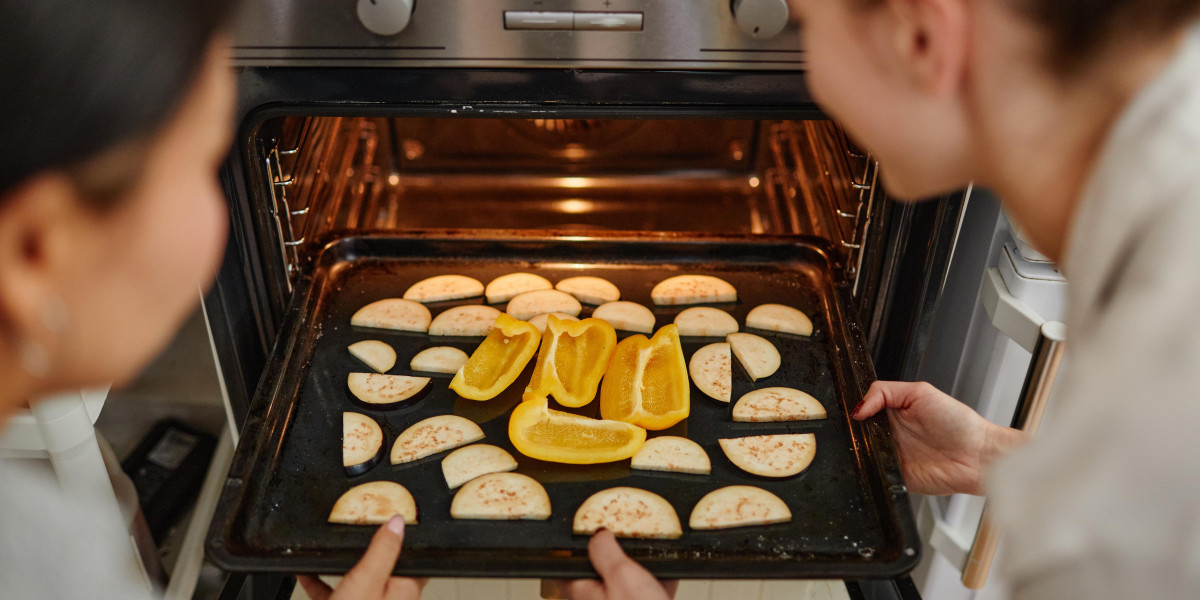Understanding Built-In Electric Ovens: A Comprehensive Guide
In the last few years, the kitchen has actually changed from merely a cooking area to a hub for family events, entertaining guests, and delighting in quality time. One of the most pivotal components of modern-day cooking experiences is the kitchen oven. Built-in electric ovens have gained enormous appeal, thanks to their space-saving styles, sleek looks, and advanced features. This article offers an extensive exploration of built-in electric ovens, covering their types, benefits, setup factors to consider, upkeep ideas, and a comprehensive FAQ area.
What Are Built-In Electric Ovens?
Built-in electric ovens are integrated cooking systems designed to be installed directly into kitchen cabinets or walls. Unlike standard freestanding ovens, built-in models offer a seamless appearance, contributing to the general design of the kitchen area. They come equipped with numerous cooking functions, advanced technology, and energy-efficient functions.

Types of Built-In Electric Ovens
Built-in electric ovens come in various styles to fulfill varied cooking needs and kitchen designs. Here are the most common types:
Single Ovens: Ideal for smaller sized kitchen areas, single ovens use sufficient cooking area for everyday meals without taking up too much room.
Double Ovens: For avid cooks or households that delight in hosting supper celebrations, double ovens provide the capability to cook several dishes at different temperatures at the same time.
Wall Ovens: Wall ovens are installed at eye level, making them easily available while eliminating the need to bend down. They typically are available in single or double configurations.
Mix Ovens: These versatile appliances combine conventional oven cooking with microwave performance, permitting faster cooking times while protecting food flavor and texture.
Steam Ovens: Designed for health-conscious cooks, steam ovens utilize steam to cook food, maintaining wetness and nutrients. They are best integrated oven for veggies, fish, and rice dishes.
Advantages of Built-In Electric Ovens
Built-in electric ovens offer numerous advantages for property owners aiming to enhance their cooking experience. A few of the advantages consist of:
Aesthetic Appeal: Their smooth design enables greater design flexibility, fitting perfectly into kitchen cabinetry and producing a polished appearance.
Area Efficiency: Bosch Series 8 Built-in Oven with Air Fry ovens save important floor space, making them an outstanding option for compact kitchens.
Improved Functionality: Many built-in electric ovens incorporate the latest cooking technologies, such as convection cooking, wise controls, and several cooking modes.
Easy Accessibility: Models installed at eye level are easier to gain access to, decreasing strain while examining or getting rid of food.
Increased Home Value: Installing a high-quality built-in Cookology 72L Electric Oven - Multifunction & Convenient oven can increase the resale worth of a home due to its modern-day and premium features.
Installation Considerations
While built-in electric ovens offer various advantages, proper setup is vital to ensure they work optimally. Below are crucial considerations to remember:
Cabinet Size: Ensure that the cabinets where the oven will be installed is sized correctly. Many Cookology 60cm Large Built Under Double Oven 60cm Built-in Electric Fan Oven - Reliable Cooking (visit the following webpage) ovens included specific dimensions that should be complied with throughout installation.
Electrical Requirements: Built-in electric ovens require a devoted electrical supply. Homeowners ought to seek advice from a certified electrician to guarantee that the electrical wiring satisfies the required requirements.
Ventilation: Unlike gas ovens, electric ovens usually do not need venting, but appropriate air flow is necessary to avoid getting too hot.
Placement: Consider the oven's positioning worrying kitchen workflow. It needs to be quickly available while thinking about clearances from other kitchen appliances.
Setup Steps
- Measure the cabinet space to ensure the oven fits.
- Make sure the electrical supply is all set.
- Carefully position the oven within its designated cabinet.
- Secure it as per maker directions.
- Link to power and test its functionality.
Upkeep Tips for Built-In Electric Ovens
To extend the life of a built-in electric oven and ensure its dependable efficiency, implement these upkeep pointers:
Regular Cleaning: Wipe spills and stains after each usage. Usage appropriate cleaners, ideally gentle, to avoid damaging the interior surfaces.
Inspect Seals: Inspect the door seals for fractures or damage, and change them if essential to keep effectiveness.
Calibrate Temperature: Over time, ovens may lose accuracy. Use an oven thermometer to confirm temperature level readings and recalibrate if needed.
Yearly Professional Service: Schedule a professional assessment and upkeep service at least when a year for comprehensive checks and repair work.
Frequently Asked Questions (FAQs)
1. What size built-in electric oven do I need?
The size of the oven must depend upon your kitchen layout and cooking needs. Standard wall ovens normally range from 24 to 30 inches in width.
2. Can I set up a built-in electric oven myself?
While some house owners may have the abilities to install their oven, it is normally suggested to employ an expert to guarantee appropriate installation and compliance with security requirements.
3. What functions should I look for in a built-in electric oven?
Think about features like convection cooking, self-cleaning options, wise innovation, and multiple cooking modes to improve your culinary experience.
4. How much does a built-in electric oven cost?
Prices range substantially based on brand, functions, and size. A basic design might start around ₤ 500, while high-end alternatives can surpass ₤ 3,000.
5. Are built-in electric ovens energy-efficient?
A lot of contemporary electric ovens come geared up with energy-efficient technologies, helping to minimize energy consumption while maintaining cooking efficiency.
Built-in electric ovens use a blend of style, convenience, and advanced cooking capabilities, making them a vital addition to today's kitchens. By understanding the types, benefits, installation factors to consider, and proper upkeep, house owners can make educated choices that enhance their cooking experiences while enhancing their kitchen's aesthetic appeals. Whether one is a seasoned chef or a casual cook, investing in a built-in electric oven can transform the cooking experience into a delightful culinary journey.









